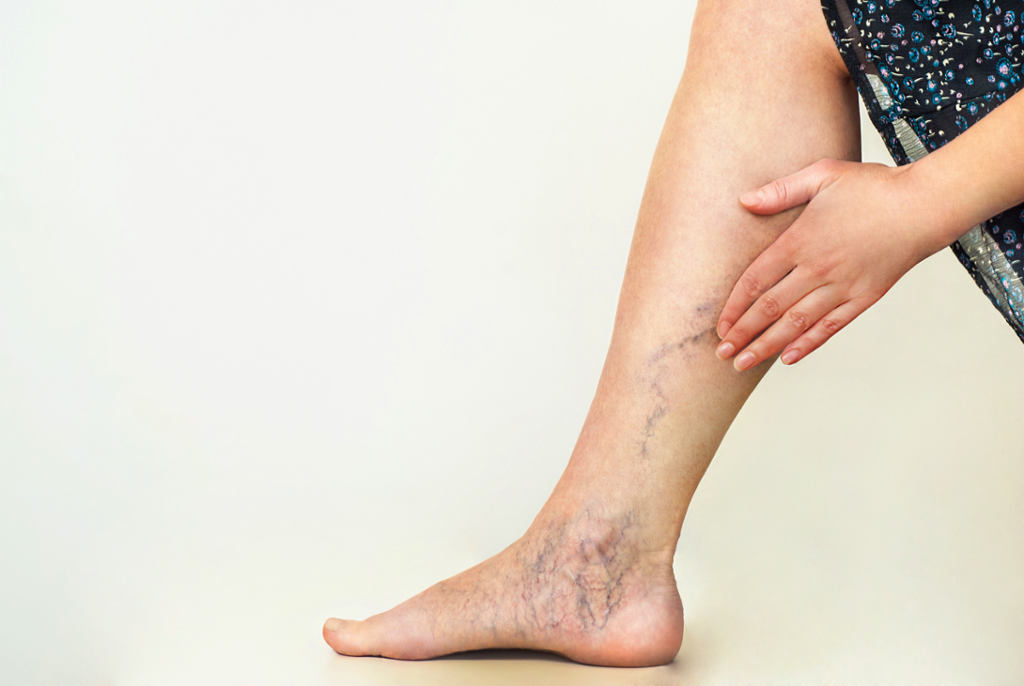Vein Center
We offer safe, precise, effective and minimally invasive treatment options to treat your specific needs. Our services are performed safely in our office by your doctor and under local anesthesia, avoiding surgery and hospital stays. Normally, you can return to normal activity on the same day.
Dr. White’s Vein Center offers a complete package for vein treatment which includes, varicose veins, spider veins, and symptoms of venous insufficiency. We have the ability to treat your entire venous needs.

About
What to Expect
During your first visit to the office you will be seen and evaluated by Dr White. If indicated, you may schedule an appointment for an ultrasound. The ultrasound study findings will provide complete assessment of your vein problem.
Dr. White will explain the findings and provide a treatment plan. The alternatives and the risks of any procedure will be explained as well. Questions will be answered.
Vein Center Treatments
Varicose Veins
Spider Veins
Reticular Veins
Venous ulcers
Frequently Asked Questions
What are varicose veins?
Varicose veins–which afflict 10% to 20% of all adults –are swollen, twisted, blue veins that are close to the surface of the skin. Because valves in them are damaged, they hold more blood at higher pressure than normal. That forces fluid into the surrounding tissue, making the affected leg swell and feel heavy.
Unsightly and uncomfortable, varicose veins can promote swelling in the ankles and feet and itching of the skin. They may occur in almost any part of the leg but are most often seen in the back of the calf or on the inside of the leg between the groin and the ankle. Left untreated, patient symptoms are likely to worsen with some possibly leading to venous ulceration.
what causes varicose veins?
Varicose veins is caused by increased blood pressure in the veins. The blood moves towards the heart by one-way valves in the veins. When the valves become weakened or damaged, blood can collect in the veins.
what is sclerotherapy?
A chemical injection, such as a saline or detergent solution, is injected into a vein causing it to “spasm” or close up. Other veins then take over its work. This may bring only temporary success and varicose veins frequently recur. It is most effective on smaller surface veins, less than 1-2mm in diameter.
what is ambulatory phlebectomy?
As with sclerotherapy, ambulatory phlebectomy is a surgical procedure for treating surface veins in which multiple small incisions are made along a varicose vein and it is “fished out” of the leg using surgical hooks or forceps. The procedure is done under local or regional anesthesia.
when is closure used?
Closure is used to eliminate reverse blood flow in the saphenous vein, but without physically removing the vein, and can be performed without general anesthesia. Like other venous procedures, the Closure procedure involves risks and potential complications. Each patient should consult their doctor to determine whether or not they are a candidate for this procedure, and if their condition presents any special risks. Complications reported in medical literature include numbness or tingling (paresthesia) skin burns, blood clots, temporary tenderness in the treated limb.
why does it occur more in the legs?
Gravity is the culprit. The distance from the feet to the heart is the furthest blood has to travel in the body. Consequently, those vessels experience a great deal of pressure. If vein valves can’t handle it, the back-flow of blood can cause the surface veins to become swollen and distorted.
who is at risk?
Conditions contributing to varicose veins include genetics, obesity, pregnancy, hormonal changes at menopause, work or hobbies requiring extended standing, and past vein diseases such as thrombophlebitis (i.e. inflammation of a vein as a blood clot forms.) Women suffer from varicose veins more than men, and the incidence increases to 50% of people over age 50.
What are the symptoms?
Varicose veins may ache, and feet and ankles may swell towards day’s end, especially in hot weather. Varicose veins can get sore and inflamed, causing redness of the skin around them. In some cases, patients may develop venous ulcerations.
What are venous ulcers?
Venous ulcers are areas of the lower leg where the skin has died and exposed the flesh beneath. Ulcers can range from the size of a penny to completely encircling the leg. They are painful, odorous open wounds which weep fluid and can last for months or even years. Most leg ulcers occur when vein disease is left untreated. They are most common among older people but can also affect individuals as young as 18.
what is the short term treatment for varicose veins?
ESES. It stands for Exercise Stockings Elevation and Still. Exercising, wearing compression hose, elevating and resting the legs will not make the veins go away or necessarily prevent them from worsening because the underlying disease (venous reflux) has not been addressed. However, it may provide some symptomatic relief.


